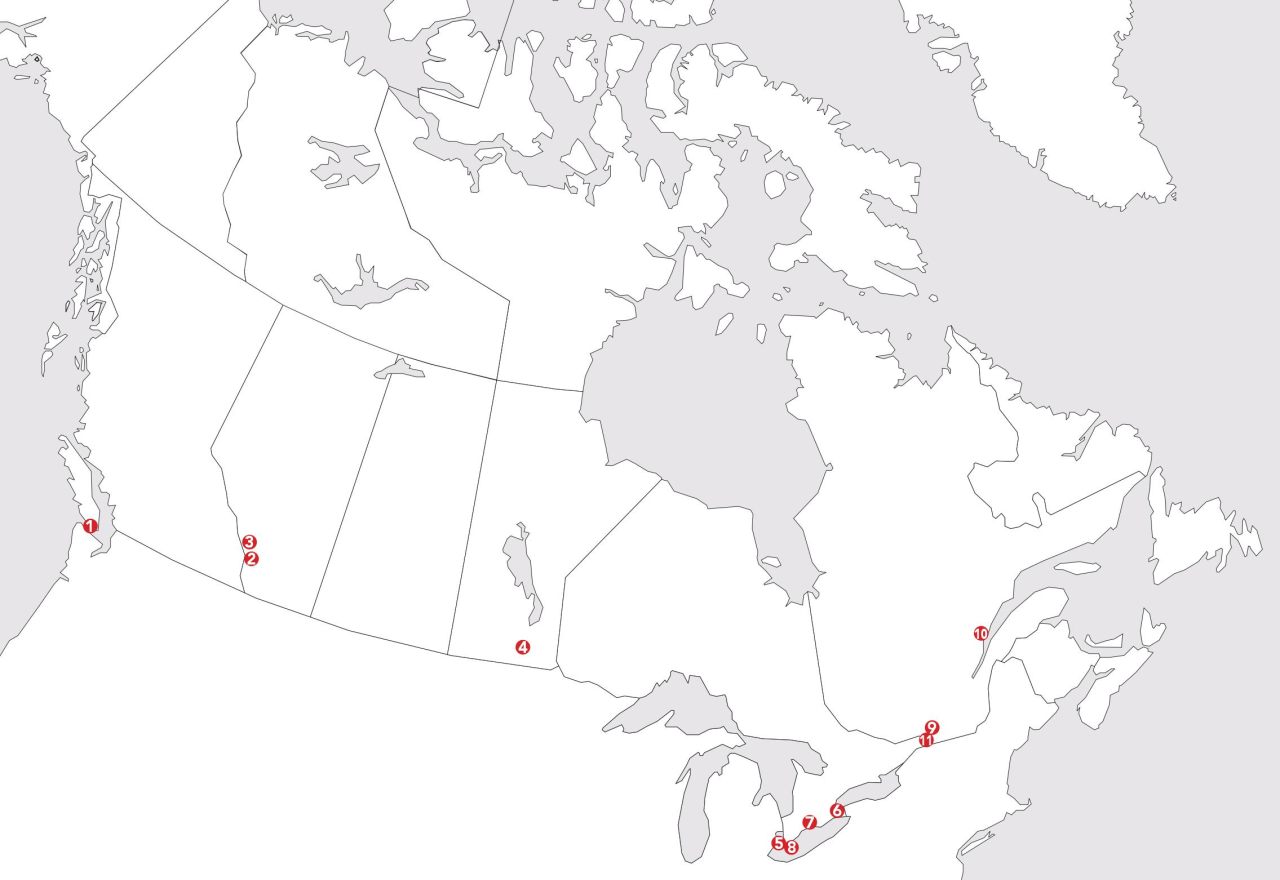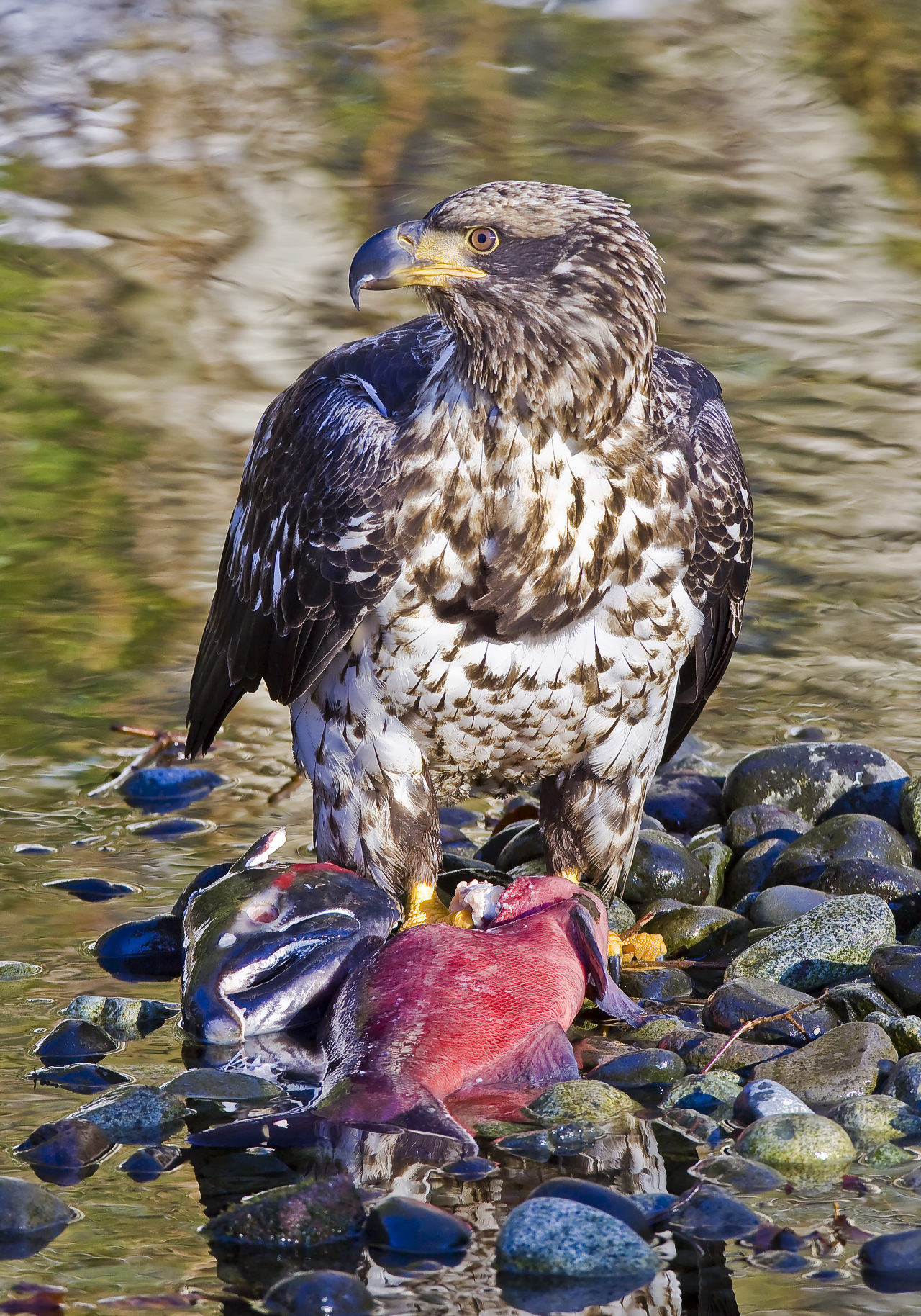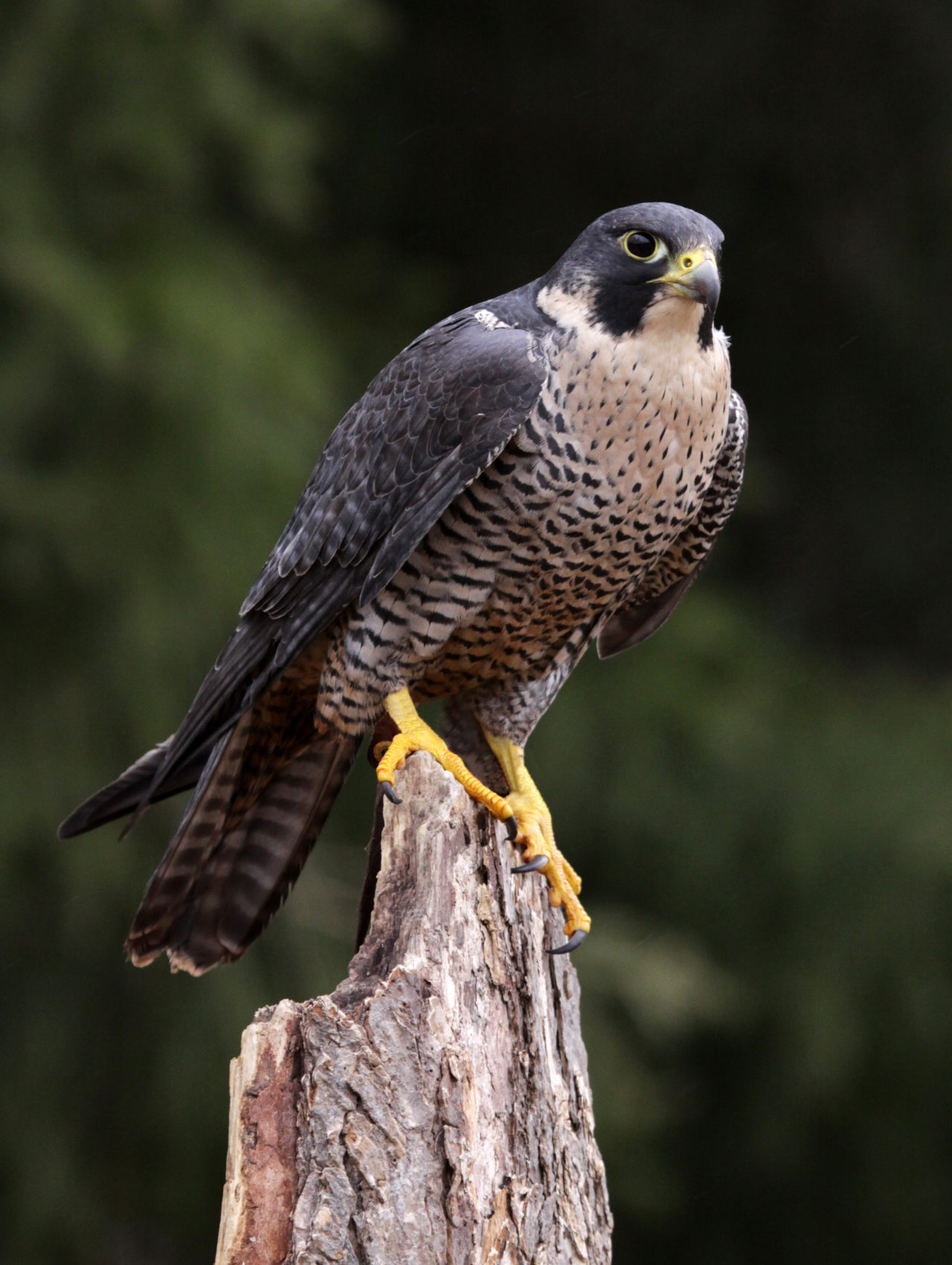Best Places to See Birds of Prey in Canada
By David M. Bird, Emeritus Professor of Wildlife Biology and former Director of the Avian Science and Conservation Centre at McGill University.
Consultant editor for DK’s Birds of Canada, Birds of Eastern Canada, Birds of Western Canada, and Pocket Birds of Canada, David Bird takes us on a flying tour through some of the best places to spot birds of prey throughout the country.
A note on birdwatching
If you’d like to see some of Canada’s majestic birds of prey in the wild, choosing diurnal, or day-hunting, species is a good place to start.
You can always search your local parks and reserves from April to July to look for a pair of eagles, hawks, or falcons nesting high in a mature tree. Many raptors are now breeding in our cities, too. Checking out the skyscrapers in downtown Montreal or other large Canadian cities for Peregrine Falcons raising young can provide an excellent chance of spotting one of these speedy hunters. Mature coniferous trees in green spaces may bear old crow nests that have been adopted by Merlins, a smaller version of the Peregrine Falcon, which feed on House Sparrows.
People who live on the west coast are particularly blessed with excellent raptor-watching opportunities. If you drive along the highways leading into Victoria, BC, it is not difficult to see one of the many Cooper’s Hawks and Red-tailed Hawks now inhabiting that city and hunting from the lamp posts. Bald Eagles can now be seen all over the place on both coasts, but particularly in the land surrounding the city of Vancouver. During the annual fall salmon run, the Chehalis River Flats near the Harrison River in BC is home to the largest gathering of Bald Eagles in the world, sometimes numbering around 7,000 birds all at once! If you want variety, I do not recall seeing a richer area for more than ten species of birds of prey in all of Canada than the farmlands stretching from the Tsawwassen Ferry Port to Delta, BC, especially in the vicinity of the Boundary Bay Regional Park.
However, if you want to see a large number of a wide variety of hawks, falcons, and eagles in Canada all in a day’s outing (weather permitting), you’ll have to think about going out to special places in one of two periods in the year—the fall migration running from September through early November and the spring migration occurring from early March to late May. Based upon my experience, the fall season will generally prove to be more lucrative.
Keep in mind that local weather conditions can affect what you might see in any given day during migration. In the fall, a strong wind coming from the northwest generally produces lots of migrating raptors, and in the spring, winds from the southeast have the same effect. Depending on factors such as the food supply in the far north or the success of a breeding season, some years can produce great numbers of any given species, and others not as much.

Best places to go:
According to the informative book Raptor Watch: A Global Directory of Raptor Migration Sites compiled by Jorje Zalles and Keith Bildstein, Canada is home to 17 raptor watch sites. Most if not all of these sites occur along four major migration flyways— Pacific, Western Mountain, Prairie, and Eastern.
Here is a listing of some of the best places to see large concentrations of migrating raptors across Canada:
Becher Bay Headlands (1), a coastal-plain watch site near the southern tip of Vancouver Island about 25 km west of Victoria, BC, hosts as many as 13 raptor species, and 2,000 to 3,000 birds pass by there from September to early October.
Windy Point (2), located about 20 km southwest of Calgary in Sheep Valley Provincial Park, offers a mountaintop watch site where roughly 2,000 raptors comprising 13 different species can be seen in the fall. Canmore (3), also in Alberta about 105 km west of Calgary, is special in that it is best place to view up to 500 Golden Eagles, a species often rare to see, in just one October weekend!

Heading eastward, St. Adolphe (4), about 10 km south of Winnipeg, MB, is a river valley watch site offering sightings of 3,800 raptors comprising 16 different species in March and April.
In Ontario, the three most productive raptor watch sites are the Holiday Beach Migration Observatory (5) 40 km south of Windsor in Amherstburg, the Beamer Conservation Area (6) in Grimsby 20 km west of Niagara Falls, and the aptly named Hawk Cliff (7) 10 km south of St. Thomas. All three are lakeside watch sites that concentrate large numbers of migrating hawks, falcons, and eagles comprising 15 different species, but what makes Holiday Beach different from the other two fall congregations is that it is primarily a spring watch site. If you’d like to combine raptor-watching with other bird watching, you can’t go wrong with a fall or spring visit to Point Pelee National Park (8) where lots of raptors congregate to hunt other migrating birds.

In Quebec, the two best places for sighting raptors in the fall are the lands in and around the Morgan Arboretum (9), which is part of the Macdonald Campus of McGill University at Ste. Anne de Bellevue, and the Tadoussac Bird Observatory (10) located in the Parc du Saguenay Provincial Park about 4 km northeast of Tadoussac. Each fall, the former watch site offers close to 5,000 raptors comprising 15 species, while the latter has only 12 species but as many as 18,000 raptors passing by! As for spring watch sites, Quebec has one notable spring lookout called Eagle Crossing (11), 50 km southwest of Montreal, which gets an average of 2,000 raptors of 15 species.
Identifying raptor species:
It is not possible to provide detailed tips on how to identify these birds within the space of this article. It often takes year of practice to become proficient at it, and even the experts get them wrong sometimes! However, at the hawk watch sites described above, there are often experts on hand to count the birds and who are usually all too happy to shout out the names and even ages of the raptors flying overhead and to help with identifying characteristics. A good field guide also helps.

